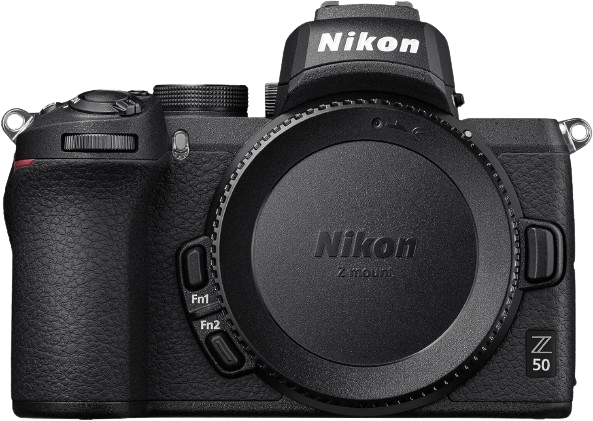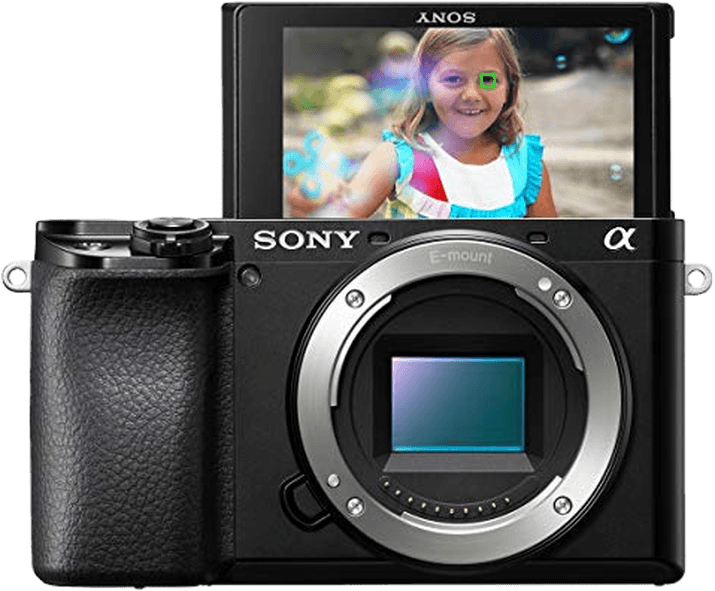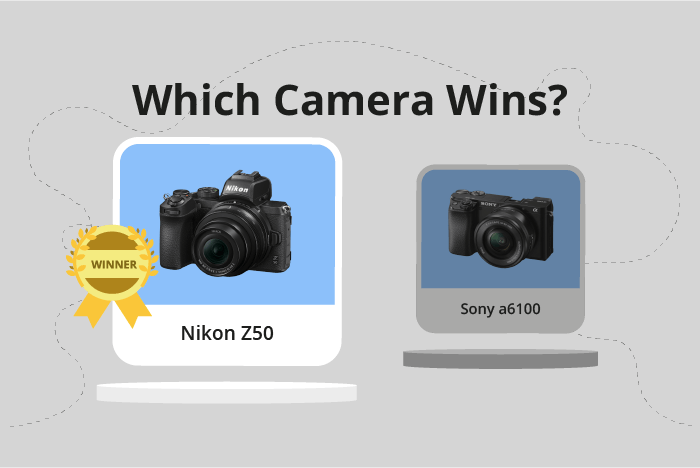Nikon Z50 vs Sony a6100 Comparison
Nikon Z50

Sony a6100

The Nikon Z50 emerges as the winner with a score of 73/100, while the Sony a6100 trails behind at 66/100. Both cameras share similarities, being mirrorless, launched in 2019, and having similar dimensions. The Z50 measures 127 x 94 x 60mm and weighs 450g, while the a6100 is slightly smaller and lighter at 120 x 67 x 59mm and 396g.
The Nikon Z50 outperforms the Sony a6100 in several aspects, justifying its higher score. However, the Sony a6100 has its advantages, such as a lower launch price of $750 compared to the Z50’s $859. This makes the a6100 a more budget-friendly option.
Taking everything into account, the Nikon Z50 is the superior camera due to its better specifications and performance, but the Sony a6100 can be a more affordable alternative for those on a tighter budget.
Nikon Z50 vs Sony a6100 Overview and Optics
The Nikon Z50 outperforms the Sony a6100 in terms of optics, scoring 72/100 compared to the Sony’s 68/100. Both cameras share several similarities in their specifications, including an 11 fps shooting speed, CMOS sensor type, APS-C sensor size, and the absence of image stabilization. However, there are differences that contribute to the Nikon Z50’s higher score.
The Nikon Z50 has a superior processor, the Expeed 6, compared to the Sony a6100’s Bionz X processor. This difference results in better image processing and overall performance in the Nikon Z50. Additionally, the Nikon Z50’s sensor has a higher DXOMARK score of 97, compared to the Sony a6100’s score of 82. This indicates that the Nikon Z50’s sensor has better image quality and low-light performance.
On the other hand, the Sony a6100 has a slightly higher megapixel count of 24, compared to the Nikon Z50’s 21 megapixels. This means that the Sony a6100 can capture more detail in its images, but the difference in megapixels is not drastic enough to compensate for the Nikon Z50’s other advantages.
The lens mounts are also different, with the Nikon Z50 using a Nikon Z mount and the Sony a6100 using a Sony E mount. This difference impacts the variety of lenses available for each camera. The Nikon Z50 is compatible with Nikon’s vast range of Z-mount lenses, while the Sony a6100 can use Sony’s E-mount lenses.
Despite the Sony a6100’s higher megapixel count, the Nikon Z50’s superior processor, sensor, and lens compatibility make it the better camera in terms of optics. The Nikon Z50 delivers better image quality and performance, making it the winner in this comparison.
Nikon Z50 vs Sony a6100 Video Performance
The Nikon Z50 and Sony a6100 both have a video score of 91/100, indicating an equal performance in video capabilities. These cameras share several specifications, including a maximum video resolution of 4K, maximum video dimensions of 3840 x 2160, a maximum video frame rate of 120fps, and built-in time-lapse functionality.
Despite the identical scores, there are areas where each camera excels. The Nikon Z50’s advantages include its ergonomics and user-friendly interface, making it easier for beginners to navigate and adjust settings. This allows for a more enjoyable experience when shooting videos. The Z50 also has a larger grip, which provides better stability during video recording.
On the other hand, the Sony a6100 has its own strengths. It offers better autofocus performance, ensuring that subjects remain sharp and in focus throughout the video. This is particularly useful for fast-paced action or moving subjects. Additionally, the a6100 has a more compact and lightweight design, making it a more portable option for on-the-go video shooting.
Both the Nikon Z50 and Sony a6100 cameras deliver excellent video performance, with each offering unique benefits. The Z50’s user-friendly interface and ergonomic design make it an appealing choice for those prioritizing ease of use and stability. In contrast, the a6100’s superior autofocus and compact design cater to users who need a portable camera with reliable focusing capabilities. Ultimately, the choice between the two cameras depends on individual preferences and specific video shooting requirements.
Nikon Z50 vs Sony a6100 Features and Benefits
The Nikon Z50 wins in the features comparison with a score of 86/100, while the Sony a6100 scores 68/100. Both cameras share several common specifications, including a touchscreen, flip screen, WiFi, and Bluetooth connectivity. Neither camera has built-in GPS.
The Nikon Z50 outperforms the Sony a6100 in terms of screen size and resolution. With a 3.2-inch screen and a resolution of 1,040,000 dots, the Z50 provides a clearer and larger display for composing and reviewing images than the a6100’s 3-inch screen with 921,600 dots resolution. This advantage enhances the user experience in various shooting situations.
On the other hand, the Sony a6100 does not surpass the Nikon Z50 in any specific features. Both cameras are on par in terms of connectivity and usability. However, the a6100’s lower feature score indicates that it might not be as versatile or user-friendly as the Z50.
Considering the features of both cameras, the Nikon Z50 proves to be the superior option due to its larger and higher-resolution screen. This advantage contributes to a more enjoyable and efficient shooting experience. The Sony a6100, while still offering a range of useful features, does not excel in any particular area compared to the Z50. Therefore, for photographers prioritizing usability and image review quality, the Nikon Z50 is the better choice.
Nikon Z50 vs Sony a6100 Storage and Battery
The Sony a6100 wins the storage and battery comparison with a score of 37/100, while the Nikon Z50 scores 35/100. Both cameras have one memory card slot and support USB charging. They also accept SD/SDHC/SDXC memory cards, but the Sony a6100 has an additional compatibility with Memory Stick Pro Duo cards.
The Sony a6100 outperforms the Nikon Z50 in battery life, offering 420 shots per charge compared to the Z50’s 320 shots. This makes the a6100 more suitable for longer shooting sessions. The Nikon Z50, however, falls short in this aspect, offering fewer shots per charge.
In terms of storage and battery, the Sony a6100 holds a slight advantage over the Nikon Z50 due to its longer battery life and additional memory card compatibility.
Nikon Z50 vs Sony a6100 – Our Verdict
Are you still undecided about which camera is right for you? Have a look at these popular comparisons that feature the Nikon Z50 or the Sony a6100:

